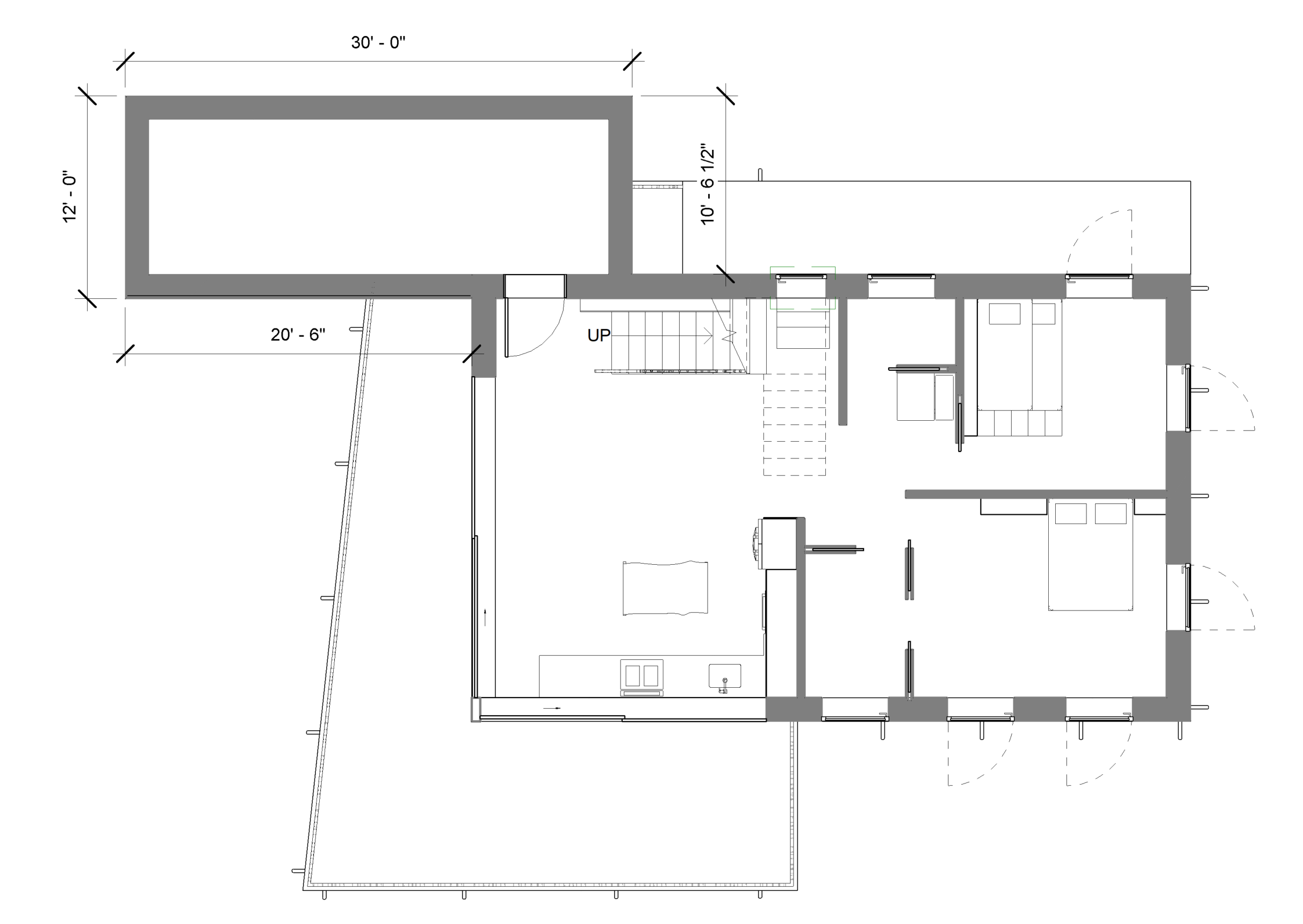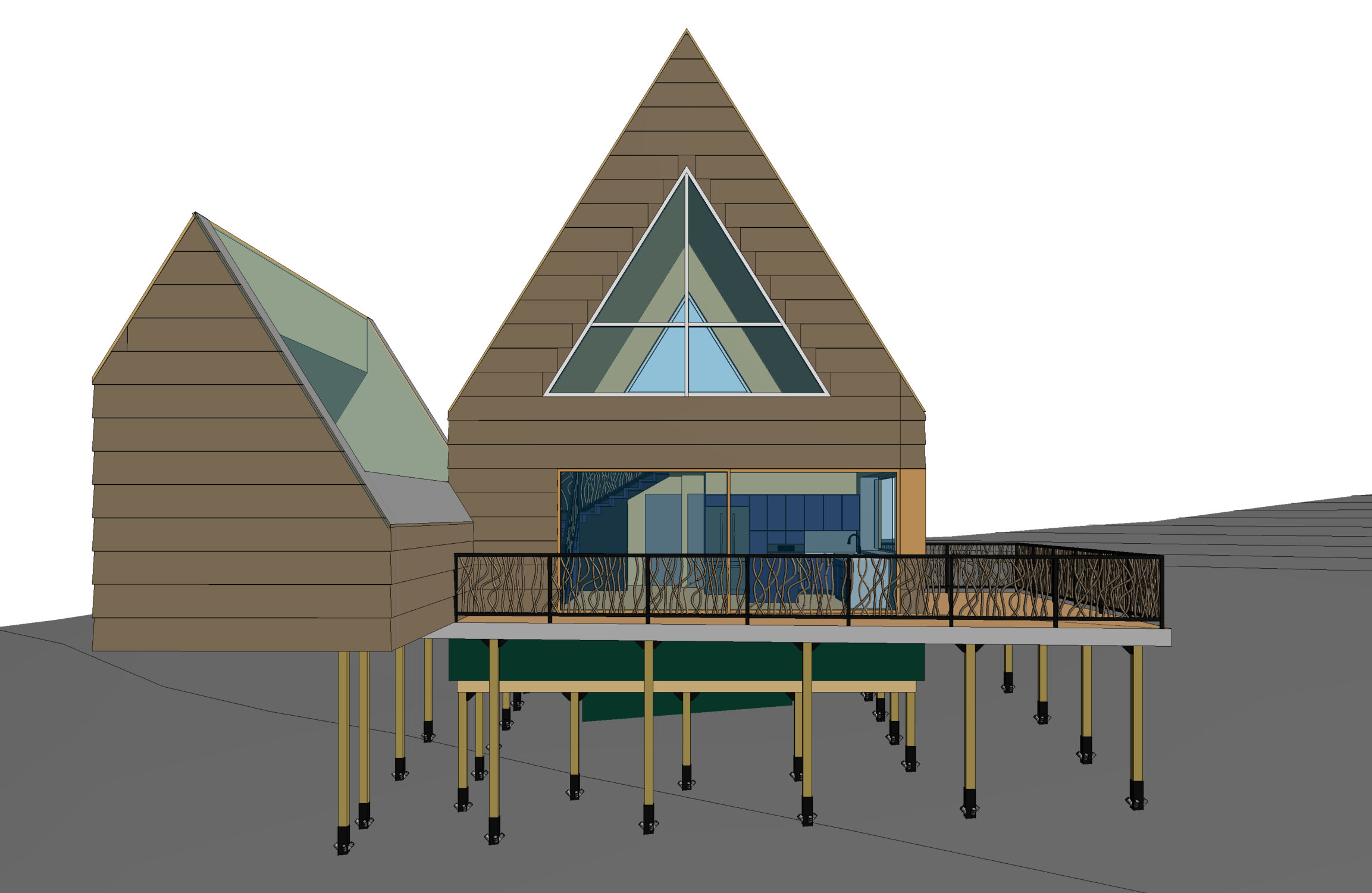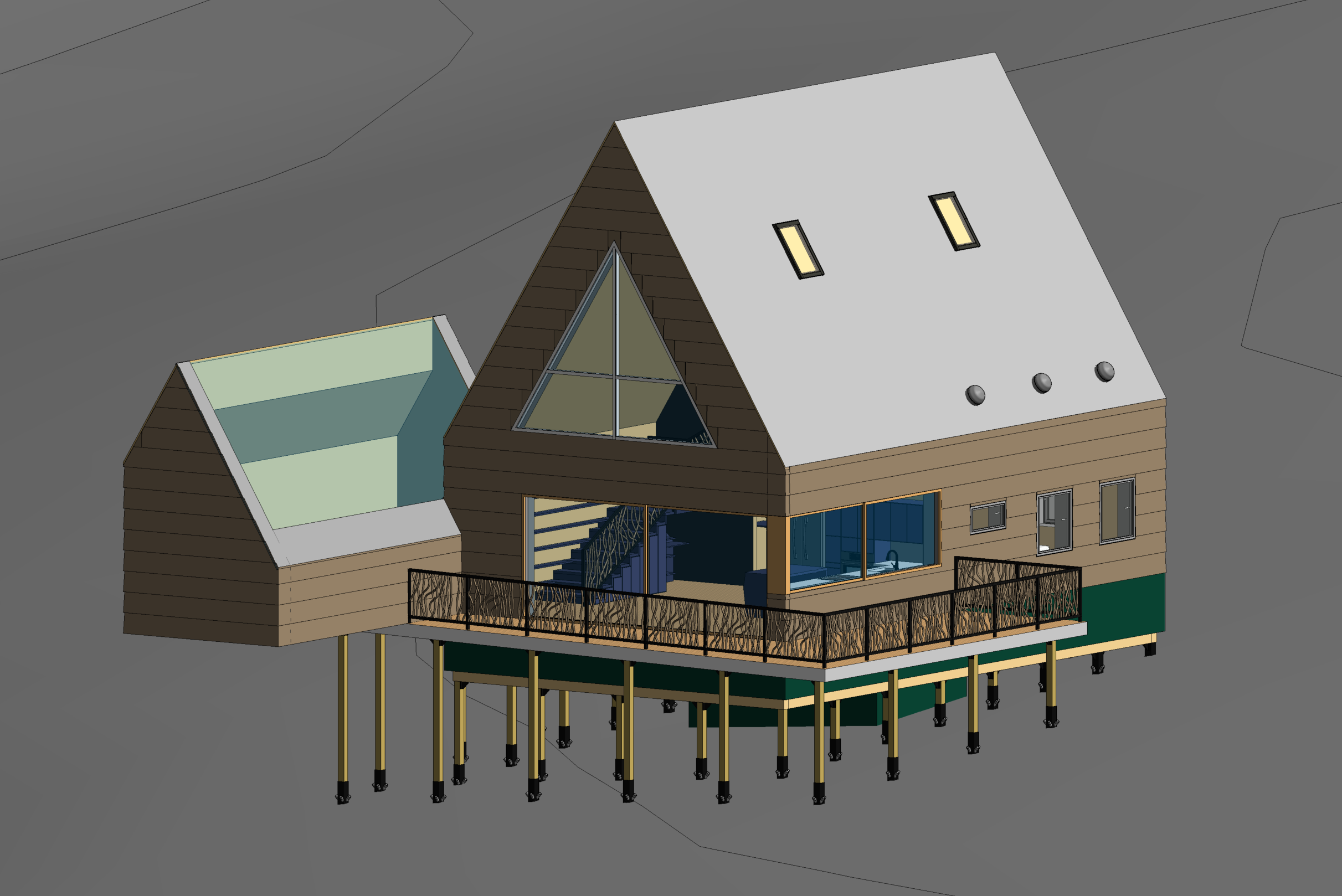Further Conceptualizing This Greenhouse…Thing…
Dear Readers,
You see the roof pitch on that greenhouse?? And how it matches the roof pitch of the home??? That. Right. There…is a product of GOOD math!!!
Those angles though…
View of the western façade
Not only do those angles just look good…but the angle of our greenhouse’s roof also creates a nearly perfectly perpendicular angle to the sun in the winter months. Why is that important, you may ask? Well, just so happens I am reading a book…that has greenhouse math in it!1
The book is titled The Year-Round Solar Greenhouse. How to Design and Build a Net-Zero Energy Greenhouse, and is written by Lindsey Schiller and Marc Plinke. As the process of learning new things tends to go~ the book is both enlightening and full of ‘hard truths.’ Enlightening? I mean, just look at those roof pitches and maximum light transmission even in winter months…
Hard truths? William and I have so, so, so….so…much work to do. And there are sooooo many other things left to learn. Don’t you hate that? You learn one thing, and then it leaves you wanting to learn, like, five more things, which spurs you on to want to learn twenty-five more things…
…It’s like “you give a mouse a cookie,” except it’s not a cookie…it is a book. Which, in our world, goes from a Passive House…to a Passive House geared towards future prefabrication…to a Passive and Living Building Challenge House geared towards future prefabrication…to a Passive and Living Building Challenge House with an attached greenhouse almost half the size of the actual house with a main hobbit door all geared towards future prefabrication. Phew.
View of the home and greenhouse from southwest-ish.

Greenhouse ‘floor plan’ round II. See how much larger it has grown since last week’s initial sketches??
So, let’s jump right into the tumultuous tango of enlightenments and hard truths from this darling book!2
~ Finding groups of crops that have similar temperature/humidity requirements is helpful.3
In doing a brief internet search, I found that most palm trees, banana trees, mango trees, and meyer lemon trees prefer a level of 50% humidity. Which is great! Because that means a majority of our plants enjoy the same relative humidity. What we need to figure out though, is what level of humidity is permissible in a passive house construction, and how to orient our ventilation system and design strategies to maximize both human, building, and plant comfort.
~ If the greenhouse is not facing directly south, that’s ok! Overall, shifting the greenhouse up to 45 degrees away from south – so, southeast or southwest – does not have a significant impact on the total light collection. However, orienting the greenhouse southeast is preferable over southwest due to the benefits of morning light. Morning light is softer, and allows the plants to gradually warm up through the day. Afternoon light is harsher and could provide a shock of heat if the plants have been in the shade all morning.4
This was some good news(ish)! Our greenhouse is definitely not facing due south. It is more southwest. We believe we are still within 45 degrees from the south, but it is still to the west. Therefore, we will have to keep the lack of morning light, and the overabundance of afternoon light, in mind as we design.
~ We. Need. To. Map. Our. Trees! It is essential to know what surrounding your greenhouse is going to act as shade. If the shade is from deciduous trees, that can be helpful! Deciduous trees will keep the greenhouse from overheating in the summer, while allowing more light to reach the plants in the winter by shedding their leaves.5 But we won’t truly know how much sun our greenhouse is going to get on a daily basis throughout the whole year until we find a way to geolocate our trees and map the path of the sun. Gah.
~Diffuse, or translucent, glazing is best for greenhouses due to its ability to scatter light evenly throughout the space.6
I read this part of the book just in time for William to introduce me to his new-found product love: Kalwall. Kalwall provides translucent windows that have an R-value up to 20! So. Stinkin’. Cool. However, we need to look into the air tightness of these windows, as well as their ability to allow PAR light to come through. PAR light is the small portion of the light spectrum that plants actually need for growth.7
~ And finally, the moment you have all been waiting for…why the steep roof? Well, according to this nifty book and math, the angle of the glazing (‘glazing’ as in where your windows are~most typically for greenhouses this is the roof) is dependent upon the angle of the sun during the winter.8 To capture the maximum amount of light from the sun into an interior space, you want the sun’s light to hit the glazing material perpendicularly (or, “straight on”). The simplified way to find what the angle of your glazing material should be for your area is to take your location’s latitude and add 20 degrees. The sum equals the best roof pitch for average winter sun.9 Central Pennsylvania is at a latitude of about 40 degrees. Add 20. That means a 60 degree roof pitch will create an ‘as perpendicular as possible’ angle to the sun in winter months, yielding the maximum amount of light transmission.10 Yes, this is a steep roof. But here is some more happier enlightenment for ya’! Steeper glazing also deflects more light in the summer, which prevents the greenhouse from overheating!11 And with all that goody greenhouse goodness, here are some problems to ponder:
– What will that ‘meeting point’ of the greenhouse’s roof and the home’s roof look like? We have to keep in mind Passive House design with airtightness and thermal bridging as well as rainwater collection as we continue with our modeling and sketches. While an extra roof means more rainwater harvesting potential, that meeting point in particular could unfortunately turn into a bucket for water, debris, and snow. Have to think about the design more on that one. A slight slope may help, but perhaps not enough.
– Not only will surrounding trees act as shade to the greenhouse, but the house itself during certain times of the day and year could perhaps act as a huge sun-blocker. Need to map this out. Fortunately! We did already think about what to do with our roof overhangs~ we originally wanted to add a roof overhang especially to the front part of the house (so that on rainy days we can still open the sliding doors and stay dry, and then on sunny days keep the intense western setting sun from glaring into our living spaces). That roof overhang, however, would now act as an obstruction to direct sunlight for our greenhouse. So! We have decided to just put overhangs directly over the sliding doors themselves. And not just any ol’ overhangs…no no no…nothing is conventional in this house! No, we are going to use solar panels with gutters as overhangs for our sliding doors! That way they can capture and use the sunlight and rainwater that falls upon its surface! It’s like the Ash Ketchum of the natural elements. Gotta catch ‘em all!!
While this blog is coming to an end…the learning continues!! I shall continue to read this book, while you all continue to ponder what the blazes we are going to be adding next to this crazy house!
Thanks for reading!
Shelby
1. Please do go ahead and imagine me saying this specific paragraph with as much pompous pride and giddy excitement as humanly possible. I will not deny that I enjoy when numbers work in our favor…
2. I mean, thus far. I’m still in the process of reading it.
3. Schiller, Lindsey and Marc Plinke. The Year-Round Solar Greenhouse. How to Design and Build a Net-Zero Energy Greenhouse. British Columbia, New Society Publishers, 2016. Page 24.
4. Schiller & Plinke, 31-32.
5. Schiller & Plinke, 33-36.
6. Schiller & Plinke, 51.
7. Schiller & Plinke, 41.
8. Or, whatever season you intend to grow during. We would like to grow all year round, so we are going to take into consideration the season with the least amount of light…a.k.a. winter.
9. Schiller & Plinke, 58-60.
10. In order for me to truly understand this fully, I had to go beyond the book and I found a NASA created lesson plan on the angle of light rays and surface distribution for 5th to 9th graders. Sometimes going back is the best way to move forward! Citation: NASA. “Chapter 4. Angle of Light Rays and Surface Distribution: A Structured Inquiry Activity.” Meteorology Activities for Grades 5-9. Microsoft Word – 1LevineTeacherguide27.doc (nasa.gov). Accessed on 24 August 2021.
11. Schiller & Plinke, 62.
2 Comments
Submit a Comment
© 2020 Sustaining Tree
© 2020 Sustaining Tree



Looking good…
Thanks Granann! It’s coming together, slowly…